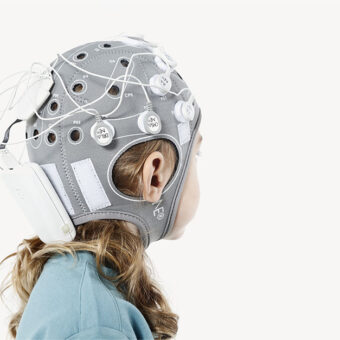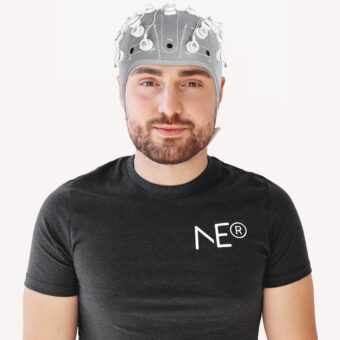Researchers working on the field of Neuroscience have surely sometimes thought about this question. It might sound like Sci-Fi for the common laymen, but neuro-implants are a reality nowadays. In this post I would like to give an introduction to the different brain recording techniques and comment the pros and cons of invasive vs. non-invasive recording techniques.
An electroencephalogram (EEG) is the recording of the brain electrical activity. A set of electrodes are placed on the scalp of the subject. This technique is non-invasive since no surgery is required. EEG is a fast and cheap technique. The main drawback is that by recording the electrical activity far away from the source (i.e. the neurones inside the skull), the signal we pick up is distorted and its amplitude reduced. Moreover EEG is often contaminated with artefacts.
The next technique in the increasing invasiveness scale is called Electrocorticogram (ECoG). This technique requires opening the skull of the subject and placing an electrode array on the exposed brain. The quality of the signal (in terms of distortion and amplitude) is much better than EEG, but obviously surgery is required. In principle, this technique does not damage the brain, or at least not too much. It is often used in severe epileptic patients before undergoing surgery to localise the brain focus of the seizures.
The most invasive technique is called deep brain recording. In this case a microelectrode is placed deep inside the brain. This procedure destroys the neurones it finds in its way irreversibly. The advantage of this technique is that we can record signals from very well defined spatial locations. An important use of this technique, together with deep brain stimulation (i.e. rather than recording, you can also use the same electrodes to inject electrical currents), is in the treatment of Parkinson’s disease patients. After stimulating deep brain areas, the patients greatly improve their motor skills.
A very interesting and popular application, the so-called brain computer interface (BCI), uses brain activity to control external actuators. In order for a BCI to be reliable, we need a reliable brain recording. That is why the performance of BCIs based on ECoG are much better than using EEG. Again here we have a controversial issue. Is it licit to undertake surgery to implant some electrodes in a brain in order to improve human capacities?

The cyborg word used to be used in Sci-Fi books, but as stated before, today it’s a reality. As of December 2010, approximately 219.000 people worldwide have received cochlear implants. These people were deaf before the implant. Surely, it is quite a licit operation from my point of view but what about implanting some electrodes in your brain so you can play video games with your thoughts alone? As a wise man once told me, if breast implants are common nowadays, why not using brain implants for purposes such as video gaming or even extending human perception and cognitive capacities? If you think about it, is there really a difference? Is it more important to look attractive than to increase our cognitive capacities? I hope the controversy is settled or at least I hope to have provided some food for thought to the reader.




